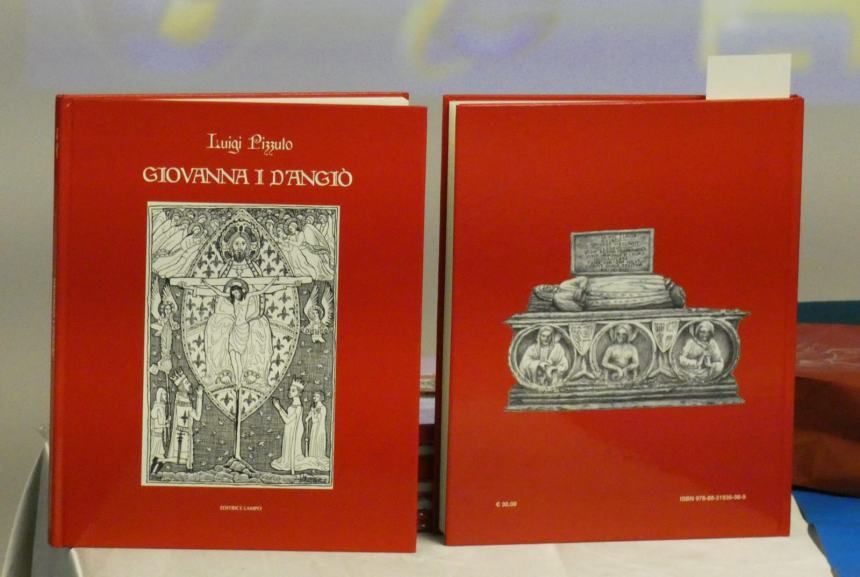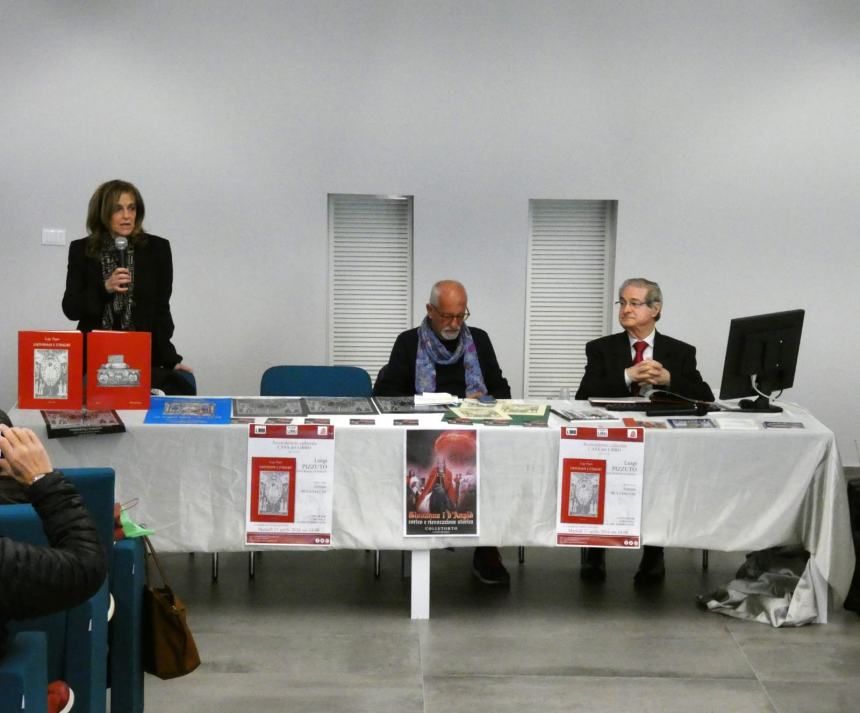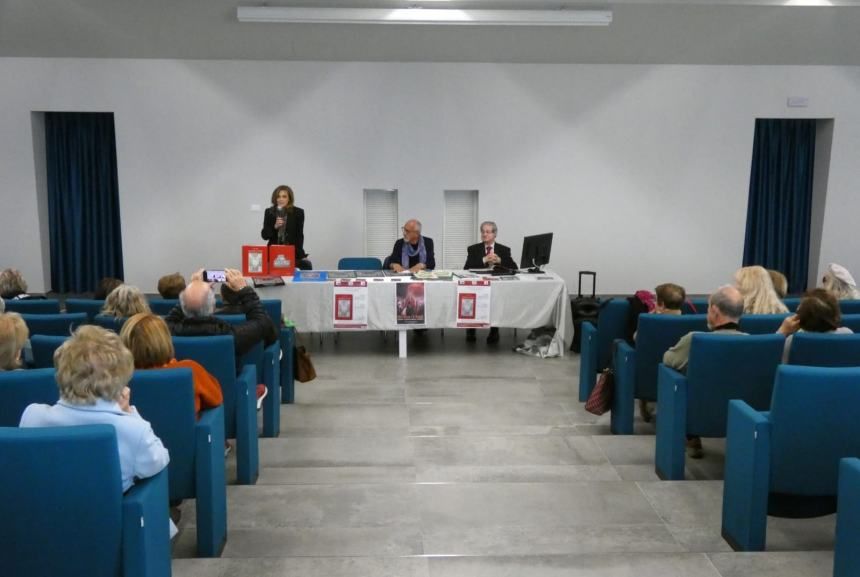TERMOLI-COLLETORTO. An attentive audience, at the Termoli auditorium, followed the presentation of Luigi Pizzuto’s book “Giovanna I of Anjou. History, poetry, theater and legend” on World Book Day. With this event, the House of the Book, led by Daniela Battista, thus celebrates the anniversary. Among many documents displayed at the presentation table, the public and the many members of the association greatly appreciated the various moments of the meeting. Which has pleasantly revisited many curiosities of yesterday’s history which, unexpectedly, returns today.
A book, as we know, grows our mind, the framework of our senses and our feelings. Having it in our hands helps us feel more like a person in our life journey. The objective of the anniversary, and of the Termoli Book House itself, is to promote the pleasure of reading well-known and lesser-known authors. “All the books in the world don’t give you happiness, claims Hermann Hesse, but secretly they send you back to yourself. In a book there is everything you need. Sun, stars and moon. Because the light you are looking for is inside you”. Books can therefore make a lot of noise in getting a person’s life back on its feet, which the “liquid knowledge” of our times definitely sets aside. This is why the function of the book, its scent, the life it recreates in its real or fantastic dimension, never fades. The president of the Casa del Libro, Daniela Battista, sensitive to this problem, reiterated these concepts. “Luigi Pizzuto’s book, you specified, brings to the attention of all of us the story of an extraordinary queen, capable of governing the Kingdom of Naples, in the fourteenth century, for a good forty years, in times that were not at all easy for a woman”. Often, as in the case of Joanna I of Anjou, precisely because she was an independent woman in her actions, she was slandered and reviled. In his report, the historian Antonio Mucciaccio traced an analysis rich in sources, anecdotes and curiosities on the protagonist of the book. Some unpublished. Her story, as always fascinating, was particularly appreciated by those present. The typographical layout and the various images and miniatures of the Beautiful Giovanna aroused no little curiosity. She is a cultured and sensible queen, an image still alive in Provence and many other parts of Italy, as Frederic Mistral states in “La reino Jano”.
“The image of the Neapolitan queen, who made the art of governing known in Termoli, as in other centers in Molise, continued Antonio Mucciaccio, is particularly alive in Molise in the small village of Colletorto. It is here that she is remembered with a very colorful historical re-enactment in period costumes, including ladies, knights, musicians, groups of clarions and flag-wavers. At the foot of its crenellated tower, high, gentle and majestic. Which incorporates a square Norman tower at the base. To fortify a plundered territory of the Kingdom “propter fremitum guerrerum et discursus hostium Regnum nostrum” (Bullet 30 April 1369) The letter from Lucia Bocale, writer, registered with the Mood Photografy of Pescara, addressed to the author is interesting perfect agreement in the images and words, which immediately convey to the reader the spirit of the queen’s sweet and determined personality, which has been questioned several times. The illustrations of the French artist Jean Luciano clearly highlight the love for one’s roots. That black and white so dear to me, underlines Lucia Bocale, from which it is easy to draw pleasant emotions without the need to speak, writes one of the most beautiful pages of the book. Noteworthy is the photo of the very precious parchment of Joan of Anjou from 1371, taken from the Ancient Fund of Agnone. It’s clear. Intact in the characteristics of the time. So much so that it gives the impression that the many past centuries have never touched it. Sarchione’s cartoon does not go unnoticed which recalls one of his books “Versi in quarantine”. I remember the professor’s teachings with pleasure. I therefore wish great success to this masterpiece”. The sculptor Michele Carafa, author of many works of art, in his final intervention traced the lines to follow to create a statue of Queen Giovanna to be placed in the village of Colletorto. The author , at the end of the day dedicated to the book, after thanking La Casa del Libro, the Municipality of Termoli and the various representatives of the associations, explained in detail the graphic design and the type of contents of the book, which will soon be presented at Naples should be considered a lovely anthology where history does not forget the many voices of the territory.
And it is intertwined, with a refined harmony, with legend, theater and the language of poetry.
World Book Day: The volume “Joan I of Anjou” presented
TermoliOnLine
World Book Day: The volume “Joan I of Anjou” presented
TermoliOnLine

World Book Day: The volume “Joan I of Anjou” presented
TermoliOnLine

World Book Day: The volume “Joan I of Anjou” presented
TermoliOnLine

World Book Day: The volume “Joan I of Anjou” presented
TermoliOnLine

World Book Day: The volume “Joan I of Anjou” presented
TermoliOnLine

World Book Day: The volume “Joan I of Anjou” presented
TermoliOnLine

World Book Day: The volume “Joan I of Anjou” presented
TermoliOnLine

World Book Day: The volume “Joan I of Anjou” presented
TermoliOnLine

World Book Day: The volume “Joan I of Anjou” presented
TermoliOnLine

World Book Day: The volume “Joan I of Anjou” presented
TermoliOnLine














